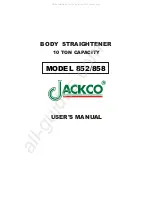
65 / 73
6. LOADING AND LOAD SECURITY
6.1. Loading – Unloading Operations
Accident hazards arising from
loading and unloading and
load securing process perfor-
med not professionally.
Safety Reminder
•
During the loading/unloading opera-
tions, the parking brake must be ac-
tivated, and the vehicle must be
fixed with Wheel chocks.
•
To prevent slipping, tipping or sink-
ing of the vehicle, the vehicle must
be parked on a flat and firm surface.
•
Ensure that you made a proper load
distribution in compliance with all
laws, rules and regulations.
•
The suspension of the vehicle may
be raised during the loading/ un-
loading process. Because of this
reason, the vehicle height may be
bigger than the permitted height lim-
its. Always set the trailer in the driv-
ing position after loading and
unloading. Always check height lim-
its when entering tunnels and
passages.
•
Make sure that the weight or dimen-
sions of the load do not exceed the
technical and legal limits.
•
Note that vehicle stability may be af-
fected by the load distribution, the
braking distance may be longer and
a larger turning radius may be
required.
•
During loading, consider the laws of
the countries you are going to and
passing through, as well as the
laws.
•
Give attention to the maximum axle
weight and total weight.
•
Comply all national/international
laws, rules, and regulations about
loading and occupational safety.
6.2. Loading
•
The load must be secured so that it
does not move while the vehicle is
in motion or during sudden stops.
•
Distribute any load as low as possi-
ble on the loading floor. The load's
center of gravity must always be
above the vehicle's centerline.
•
If a roof lift or sliding roof system is
used, make sure the system is
made suitable for driving.
•
Make the tensions by making the
canvas connections securely.
•
Secure the load with brackets and
load holders and make sure it is
secure.
6.3. Safety Instructions
Accident hazards arising from
loading and unloading and
load securing process perfor-
med not professionally.
•
Make sure that the cargo is properly
distributed and in accordance with
all laws, rules, and regulations.
Check the loading limits, total
weight, and axle load capacities. Do
not exceed the weight limits which
are defined in the user manual and
identification plate. Comply with all
national/international laws, rules
and regulations about loading and
occupational safety.
•
Place the Cargo as close as possi-
ble to the loading area’s floor. The
center of gravity of the load must al-
ways be on the center line of the ve-
hicle. Be all the regulations and
laws about load security.
•
While all vehicles are being de-
signed, except for specific ones, it is
assumed that the load will be









































